Abstract
Harmon, Shirley A. (Ohio State University, Columbus), and Jack N. Baldwin. Nature of the determinant controlling penicillinase production in Staphylococcus aureus. J. Bacteriol. 87:593–597. 1964.—From three penicillinase-producing strains of Staphylococcus aureus 38 penicillin-sensitive mutants were isolated. With phages 80 and 53 of the International Typing Series, each of these mutants was a competent recipient of the penicillinase marker from the parent strains. Although numerous reciprocal transductions were performed between penicillin-sensitive mutants, no penicillinase-producing recombinants were observed. Reversion of the penicillinase-negative mutants to capacity to produce penicillinase was never observed. When tested for 50 distinctive physiological characteristics, the mutants generally were similar to the parent strains except for resistance to penicillin. One penicillin-sensitive mutant failed to produce detectable amounts of five exoenzymes. By treating resistant strains with acridine orange, it was possible to isolate sensitive strains at a frequency that was 60 times greater than the spontaneous mutation rate. Thus, the determinant controlling the capacity of strains of S. aureus to produce penicillinase appears to be a cytoplasmic element.
Full text
PDF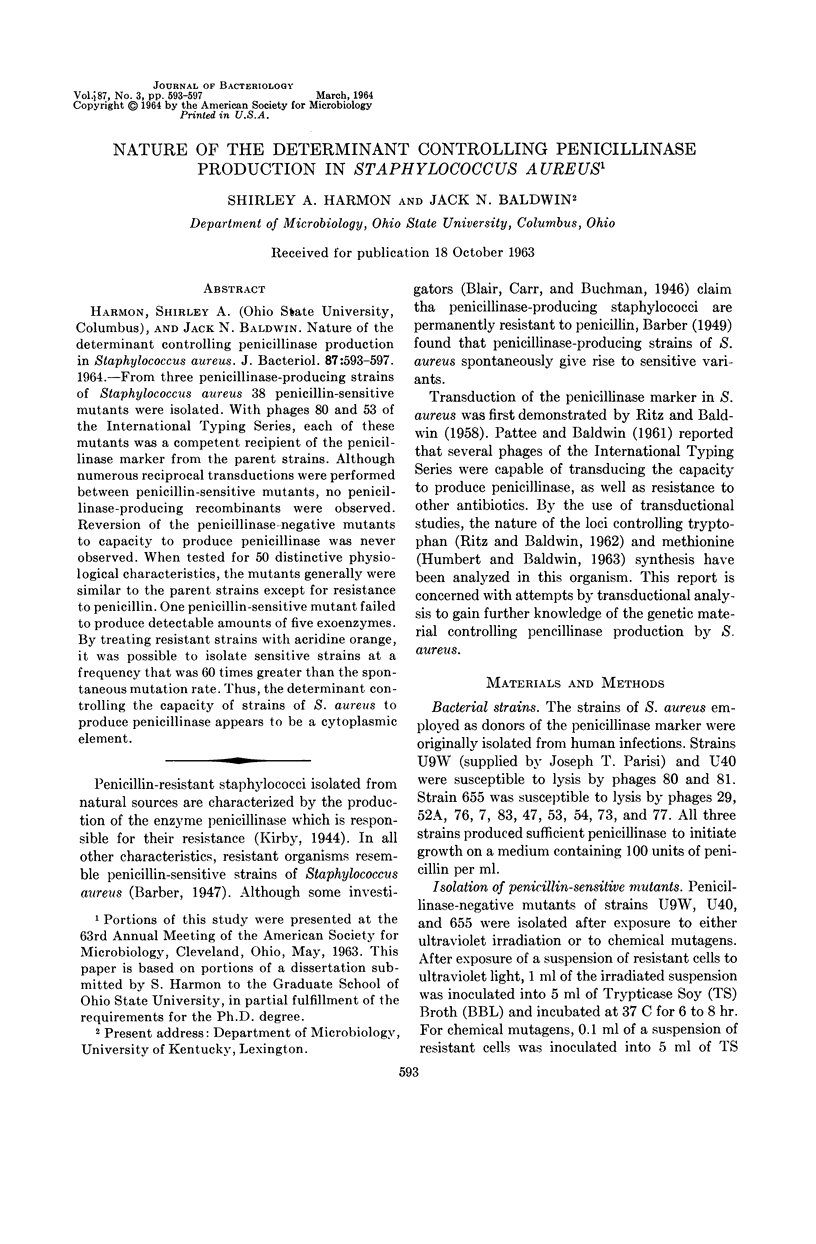
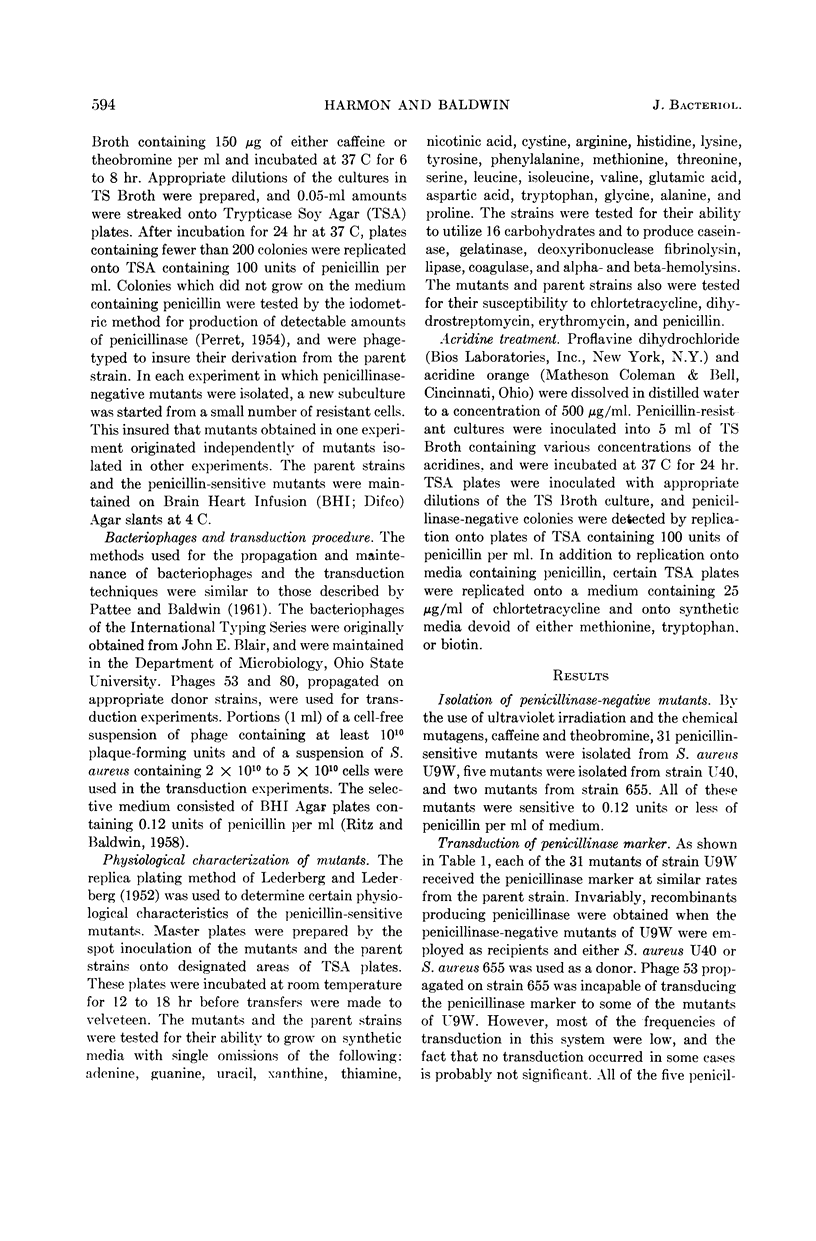
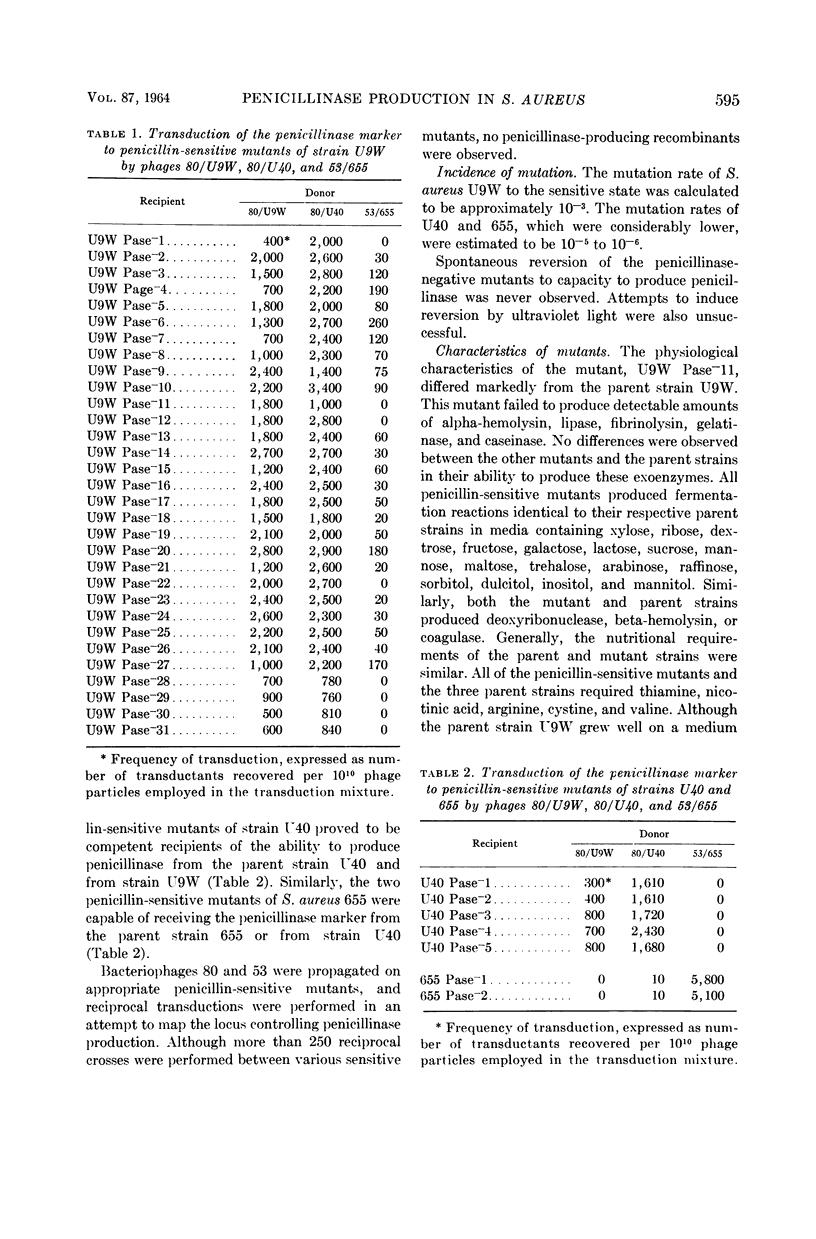
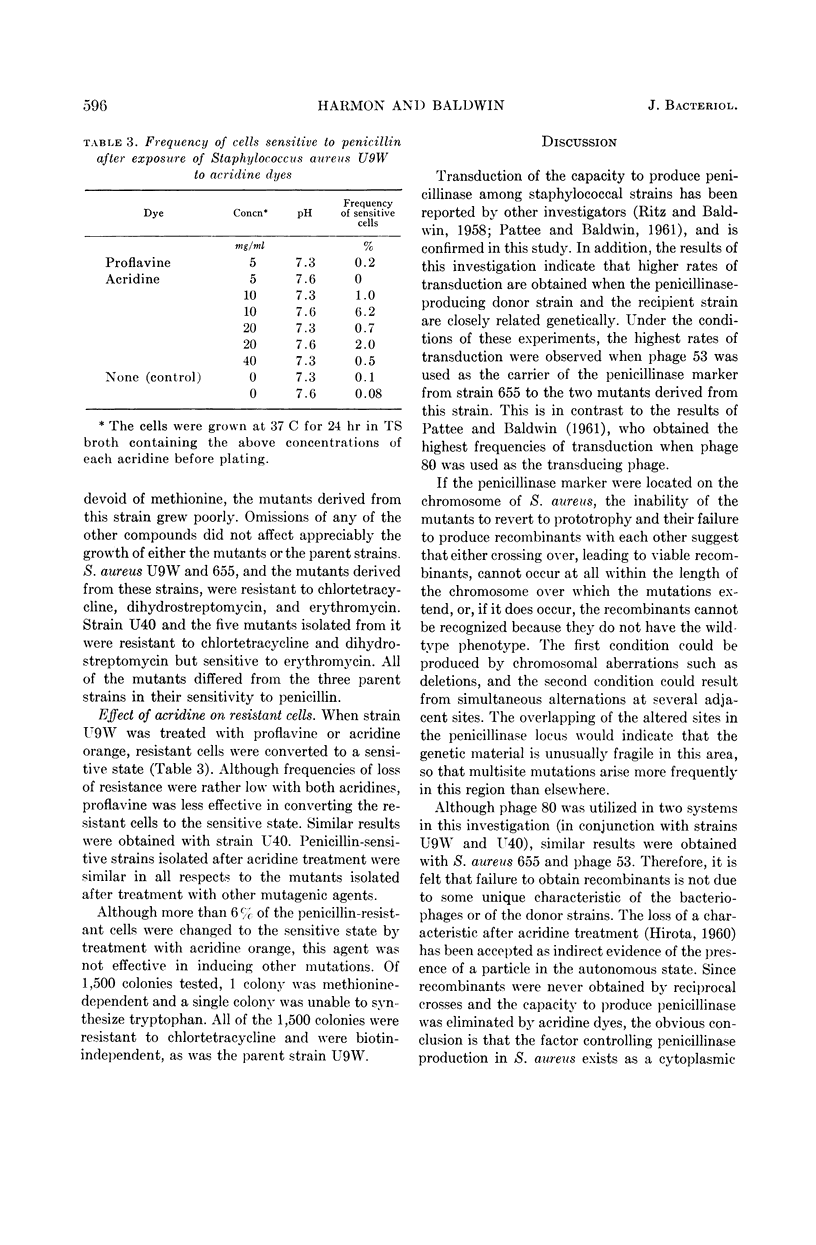
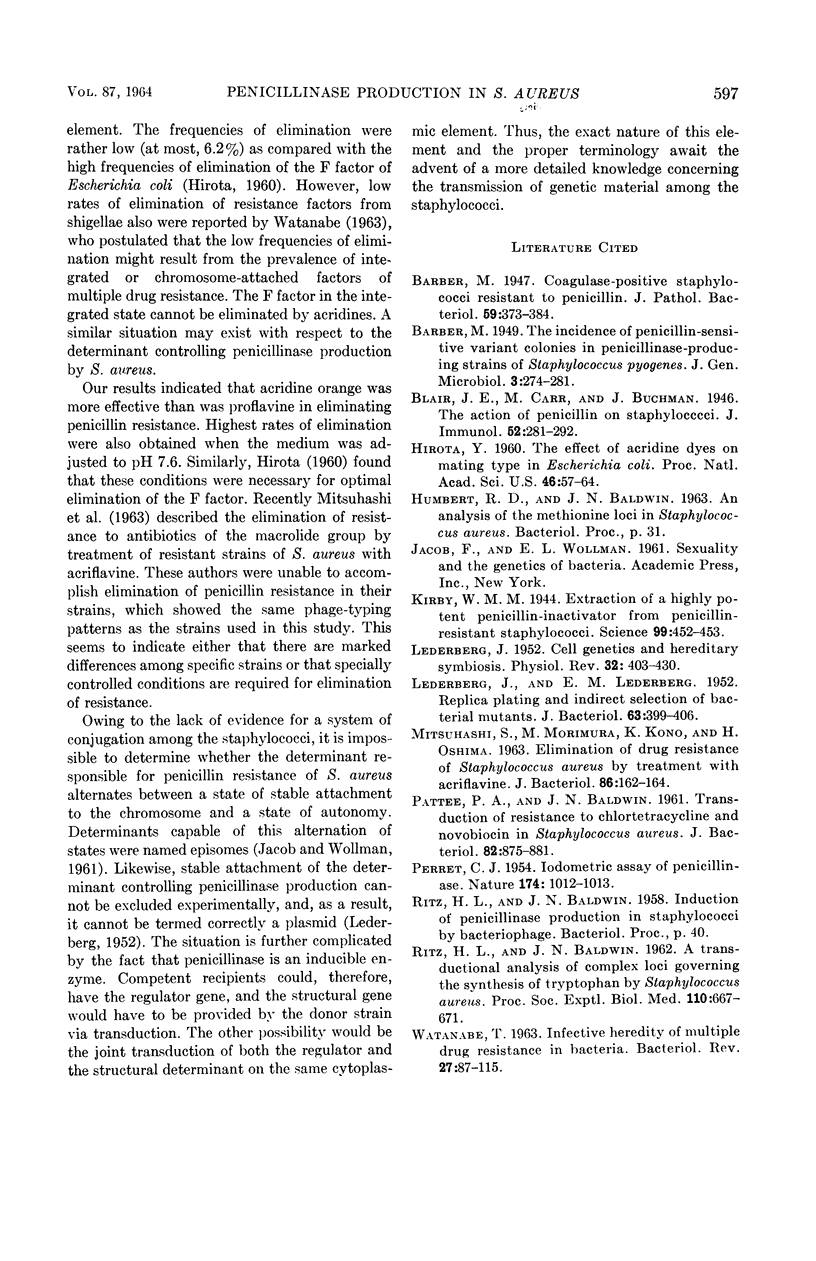
Selected References
These references are in PubMed. This may not be the complete list of references from this article.
- Hirota Y. THE EFFECT OF ACRIDINE DYES ON MATING TYPE FACTORS IN ESCHERICHIA COLI. Proc Natl Acad Sci U S A. 1960 Jan;46(1):57–64. doi: 10.1073/pnas.46.1.57. [DOI] [PMC free article] [PubMed] [Google Scholar]
- Kirby W. M. EXTRACTION OF A HIGHLY POTENT PENICILLIN INACTIVATOR FROM PENICILLIN RESISTANT STAPHYLOCOCCI. Science. 1944 Jun 2;99(2579):452–453. doi: 10.1126/science.99.2579.452. [DOI] [PubMed] [Google Scholar]
- LEDERBERG J. Cell genetics and hereditary symbiosis. Physiol Rev. 1952 Oct;32(4):403–430. doi: 10.1152/physrev.1952.32.4.403. [DOI] [PubMed] [Google Scholar]
- LEDERBERG J., LEDERBERG E. M. Replica plating and indirect selection of bacterial mutants. J Bacteriol. 1952 Mar;63(3):399–406. doi: 10.1128/jb.63.3.399-406.1952. [DOI] [PMC free article] [PubMed] [Google Scholar]
- MITSUHASHI S., MORIMURA M., KONO K., OSHIMA H. ELIMINATION OF DRUG RESISTANCE OF STAPHYLOCOCCUS AUREUS BY TREATMENT WITH ACRIFLAVINE. J Bacteriol. 1963 Jul;86:162–164. doi: 10.1128/jb.86.1.162-164.1963. [DOI] [PMC free article] [PubMed] [Google Scholar]
- PATTEE P. A., BALDWIN J. N. Transduction of resistance to chlortetracycline and novobiocin in Staphylococcus aureus. J Bacteriol. 1961 Dec;82:875–881. doi: 10.1128/jb.82.6.875-881.1961. [DOI] [PMC free article] [PubMed] [Google Scholar]
- PERRET C. J. Iodometric assay of penicillinase. Nature. 1954 Nov 27;174(4439):1012–1013. doi: 10.1038/1741012a0. [DOI] [PubMed] [Google Scholar]
- RITZ H. L., BALDWIN J. N. A transduction analysis of complex loci governing the synthesis of tryptophan by Staphylococcus aureus. Proc Soc Exp Biol Med. 1962 Aug-Sep;110:667–671. doi: 10.3181/00379727-110-27611. [DOI] [PubMed] [Google Scholar]
- WATANABE T. Infective heredity of multiple drug resistance in bacteria. Bacteriol Rev. 1963 Mar;27:87–115. doi: 10.1128/br.27.1.87-115.1963. [DOI] [PMC free article] [PubMed] [Google Scholar]


